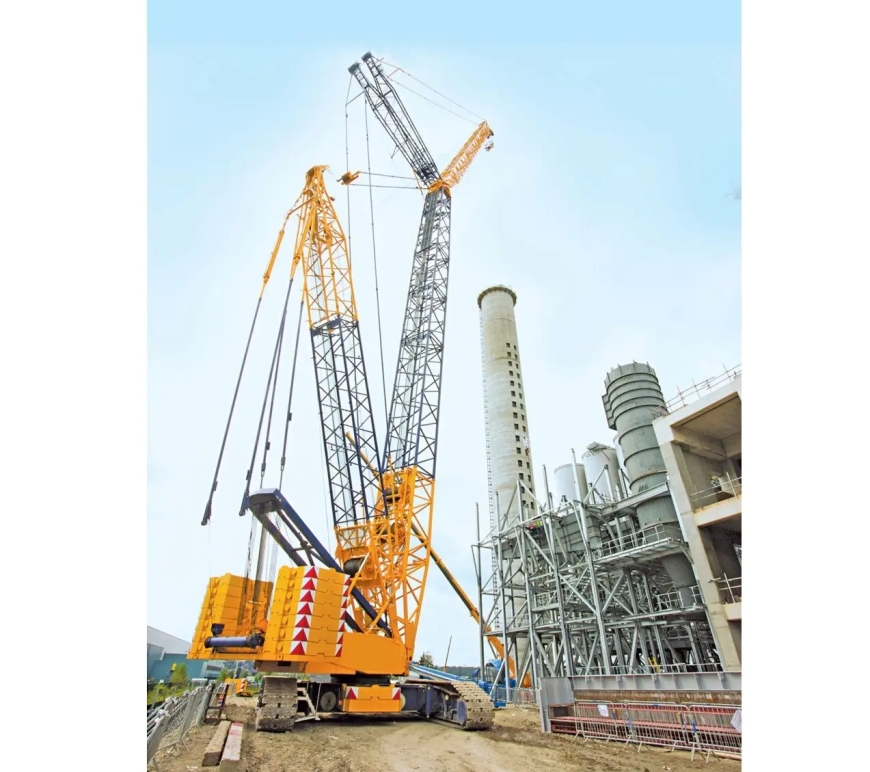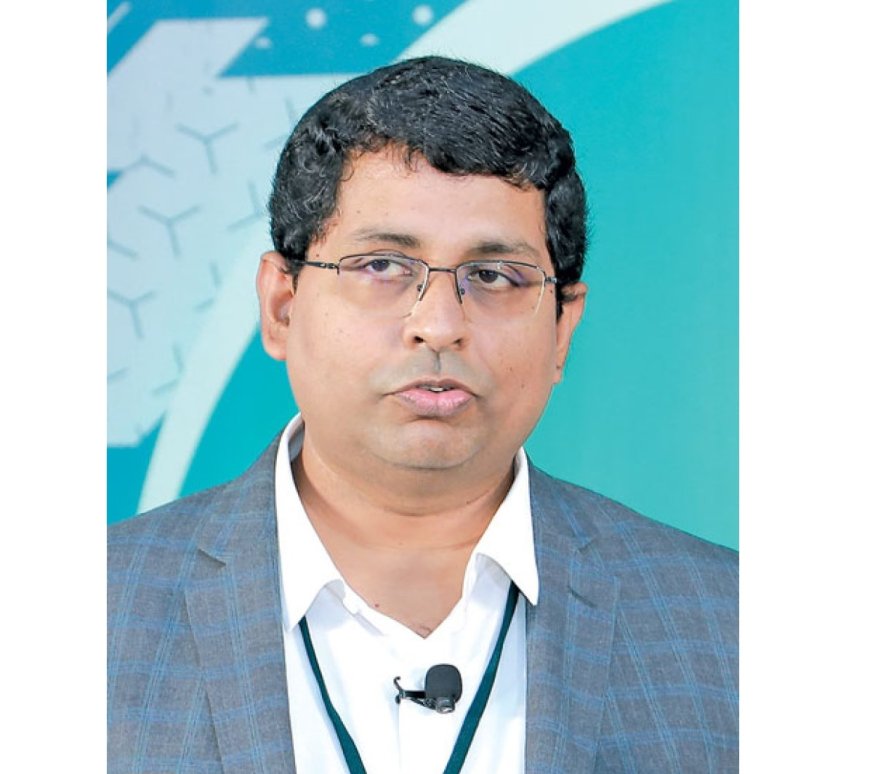Built to LIFT
Heavy lifting equipment is extensively used in the construction industry. The equipment helps to move or lift heavy objects with ease. It is also used for various other purposes such as loading and unloading goods and shifting large machines.

Heavy lifting equipment is extensively used in the construction industry. The equipment helps to move or lift heavy objects with ease. It is also used for various other purposes such as loading and unloading goods and shifting large machines. Equipment Times explores the progress of heavy lifting market, major design changes, and role of safety, added features, operator training initiatives and challenges in the heavy lifting equipment industry.
Heavy lifting Cranes are utilized for lifting and carrying heavy goods with the help of a hoisting mechanism equipped with hoist ropes, wire ropes, chains, or shelves. There are many types, including bridge cranes, overhead traveling cranes, girder cranes, pedestal jib cranes, and crawler cranes. A heavy crane is a mechanical device with a hoisting mechanism attached with wire ropes, hoist ropes, sheaved ropes, or chains. Heavy Cranes are used for material handling applications on construction sites.
The market is witnessing growth, owing to the increasing demand from the construction sector. The evolving designs and the high load-lifting capacity are expected to serve the requirements of various industries, including, complex, manufacturing, telecommunication worksites, and shipbuilding.
The rapid expansion of the oil and gas, utilities, construction, manufacturing, and mining sectors across the globe is anticipated to propel the demand for heavy cranes. Heavy cranes are required in these sectors mainly to lift heavy materials and transport them to other places. The increasing number of residential and commercial construction projects owing to the high demand for housing and offices is likely to fuel the market.
Increasing government focus on green building development is further expected to augment the market growth. Moreover, oil & gas, mining, automotive, and other end-users are also utilizing heavy lifting cranes in their overall transportation process, which in turn, is creating a positive impact on the growth of the market
However, to cater to the demand there have been significant advances in the construction industry. For instance, the demand for heavy lifting cranes in the construction industry is likely to boost the growth of the market and drive the growth of the crane market revenue.
Better Time Management, Greater Focus on the Service and Aftermarket Sectors, and an Increase in Real Estate Values
Cranes have a relatively short working life, so significant players in the industry like Manitowoc and Liebherr are concentrating on developing real-time diagnostics and repair, parts and training, and other services to increase consumer confidence and lengthen the working life of cranes. Predictive maintenance and real-time health monitoring can decrease mobile cranes’ downtime, saving money. Adding cranes and hoists on industry floors can significantly boost productivity for lifting and transporting applications compared to floor-based lifting and transportation equipment such as forklifts and scissor lifts.
Due to the high real estate and rent costs, distribution, warehousing, and manufacturing facilities have started concentrating on optimizing space and time for various activities. Cranes that travel overhead, gantry cranes, and girder cranes can all be integrated into ceilings to enable higher stacking. This allows for greater utilization of vertical space and maximizes the volumetric area of storage facilities. In addition, the decrease in foot traffic on the industry floor results from eliminating floor-based transportation. As a result, it is expected that the aggregate impact of all of these factors will propel the expansion of the global cranes market, says a report by Straits Research.
Automation in Heavy Cranes to Spur Market Opportunities
Crane systems that are both autonomous and automated enable remote access to machines that function without the need for human operators. Artificial intelligence and connectivity sensors allow for the remote monitoring of mobile cranes. Providing real-time information about the boom’s angle, the load weight, the horizontal reach, and the efficiency of the crane eliminates the possibility of human error. Remotely controllable cranes decrease the possibility of mishaps and fatalities. Consequently, automation in mobile cranes is anticipated to generate lucrative opportunities for the growth of the cranes market.
Growing Focus on Public-Private Partnerships (PPPs) to Augment Market Growth Prospect
The lack of government funding is one of the most significant obstacles to developing infrastructure, particularly in developing countries. Building new infrastructure is a significant factor contributing to the rapid expansion of urban areas. The infrastructure gap is caused by insufficient financial resources and inefficient channels for mobilizing resources effectively for national development. In several nations, public-private partnerships (PPPs), also known as public-private partnerships, have effectively channeled private funds toward infrastructure development.
Finite Availability of Skilled Workers and Unstable Prices of Raw Materials to Hinder Market Growth
Manufacturing companies have been forced to increase employee wages due to the industry’s increased demand for skilled labor. As a result, manufacturing companies have incurred high expenses solely on the workforce. Organizations suffer from a severe staffing shortage, which makes workers overworked and dissatisfied with their jobs. In addition, the use of overhead cranes in industrial landscapes is becoming increasingly widespread, which is expected to increase the demand for skilled, trained, and qualified labor at the factory site, reports Straits Research.
Aluminum and steel prices have recently increased, which has raised the price of manufactured goods overall and affected the price of valves and electronic parts. The administration in the United States has raised tariffs on imports of steel and aluminum derivatives. The production of cranes requires a significant amount of steel, thus posing a significant barrier to expanding the crane market.
Leaders speak…
 Subhajit Chandra, Divisional Head – Mobile Crane Division, Liebherr India, said, “Our Liebherr Models of All Terrain Crane LTM1450-8.1 i.e. 450T capacity & LTM1650-8.1 i.e. 700T capacity cranes is 8 axle crane with single engine. Single Engine has enough power to supply both in Superstructure and Carrier and they are well equipped with all the new upcoming emission norms in India. Due to one engine maintenance cost reduced. Definitely two engine maintenance cost is more. The best benefit customer can get in India is fuel-efficient operation. The strong luffing jib is best suitable for Plant operation and in real estate for lifting the jib of tower cranes at higher reach, our strong luffing Jib makes the crane at the best in the 450T class capacity crane. Our Telescopic boom is a puncture proof and torsion resistant construction made of high strength fine grained structural steel. The oval boom profile provides maximum stability during bending and torsion. All telescopic sections are extended or retracted by a double-acting hydraulic cylinder. With the rapid-cycle telescopic system TELEMATIK, the various extension lengths can be positioned fully automatic or manual. All telescopic sections can be telescoped hydraulically under partial load. The telescoping process is monitored by the LICCON control on the monitor with telescope images. The telescope length is displayed on the LICCON monitor in the crane cabin.”
Subhajit Chandra, Divisional Head – Mobile Crane Division, Liebherr India, said, “Our Liebherr Models of All Terrain Crane LTM1450-8.1 i.e. 450T capacity & LTM1650-8.1 i.e. 700T capacity cranes is 8 axle crane with single engine. Single Engine has enough power to supply both in Superstructure and Carrier and they are well equipped with all the new upcoming emission norms in India. Due to one engine maintenance cost reduced. Definitely two engine maintenance cost is more. The best benefit customer can get in India is fuel-efficient operation. The strong luffing jib is best suitable for Plant operation and in real estate for lifting the jib of tower cranes at higher reach, our strong luffing Jib makes the crane at the best in the 450T class capacity crane. Our Telescopic boom is a puncture proof and torsion resistant construction made of high strength fine grained structural steel. The oval boom profile provides maximum stability during bending and torsion. All telescopic sections are extended or retracted by a double-acting hydraulic cylinder. With the rapid-cycle telescopic system TELEMATIK, the various extension lengths can be positioned fully automatic or manual. All telescopic sections can be telescoped hydraulically under partial load. The telescoping process is monitored by the LICCON control on the monitor with telescope images. The telescope length is displayed on the LICCON monitor in the crane cabin.”
Sanjay Saxena, Director of Heavy Equipment Business Unit, Sany Heavy Industry India, said, “Our cranes include truck, all terrain, crawler and rough terrain cranes. These come with the lifting capacity from 20t to 800t which we have successfully delivered in India and we can offer cranes with lifting capacity upto 5200t. These are built with remarkable load-lifting capacity delivering superior lifting performance for all kinds of construction projects. Using a highly-efficient hydraulic system and intelligent control units, our hoist cranes enable the customer to get maximum job-site productivity in multiple work environments. Our product range’s popularity is largely due to its amazing features, high efficiency and versatility to work in tough terrains. Having said that, our equipment scores high on the technology front too. Excellent performance and value for money is always assured.
As the nation has ushered into new emission standards – we have successfully embraced the Bharat CEV Stage IV norms and upgraded & launched new truck cranes in the market. The new truck cranes have been manufactured at our state-of-the-art manufacturing plant at Chakan in Pune to boost the government’s ‘Make in India’ programme. These cranes are effective in regulating and decreasing emissions and the response has been quite good in the market.”
 V. G. Sakthikumar, Managing Director, Schwing Stetter India, said, “At Schwing Stetter India, we have always focused on operator training as a vital for optimum component & Equipment Performance, and safety & economy in operations. We regularly undertake various training programs for Crane operators, Supervisors and site personnel at locations closer to Major sites. Customized training programs are also organized at request by our customers for newer and higher capacity cranes to train operators on updated machine features and safety parameters to be observed. Investing in new cranes is at one of the highest levels in recent year. Few major projects like High-Speed Railway and Metros across many cities is facilitating this demand drive and is furthering the drive created from the requirements of Industrial Projects. We have a line-up of cranes to meet various demands of the market from Smaller cranes to bigger All Terrain and Crawler Cranes which are currently in-demand for Metro and Wind Projects.
V. G. Sakthikumar, Managing Director, Schwing Stetter India, said, “At Schwing Stetter India, we have always focused on operator training as a vital for optimum component & Equipment Performance, and safety & economy in operations. We regularly undertake various training programs for Crane operators, Supervisors and site personnel at locations closer to Major sites. Customized training programs are also organized at request by our customers for newer and higher capacity cranes to train operators on updated machine features and safety parameters to be observed. Investing in new cranes is at one of the highest levels in recent year. Few major projects like High-Speed Railway and Metros across many cities is facilitating this demand drive and is furthering the drive created from the requirements of Industrial Projects. We have a line-up of cranes to meet various demands of the market from Smaller cranes to bigger All Terrain and Crawler Cranes which are currently in-demand for Metro and Wind Projects.
SCHWING – XCMG will be adding a few more products like 25 ton Truck Cranes, Rough Terrain Cranes and Higher Capacity Telescopic Crawler Cranes to our existing product range soon.”
 Jaideep Shekhar, Managing Director, Terex India, said, “The Indian market is cost-conscious, but there is an increasing focus on safety. The Franna crane, which has all the necessary safety features including a safety radar, (currently available in Australian market), is a premium product that offers safety, quality, functionality, and a return on investment. While the initial cost of a product is important, the total cost, which includes operating costs, maintenance, and servicing, is equally significant in the long run. To be competitive in pricing, the company is localizing as much as possible to bring prices down and offer a competitive total cost of ownership. However, the company’s ethos is centered on making safe and quality equipment, which they believe will ultimately win over price in the long run. Different markets will have varying price points, but the company will compete on value rather than price.”
Jaideep Shekhar, Managing Director, Terex India, said, “The Indian market is cost-conscious, but there is an increasing focus on safety. The Franna crane, which has all the necessary safety features including a safety radar, (currently available in Australian market), is a premium product that offers safety, quality, functionality, and a return on investment. While the initial cost of a product is important, the total cost, which includes operating costs, maintenance, and servicing, is equally significant in the long run. To be competitive in pricing, the company is localizing as much as possible to bring prices down and offer a competitive total cost of ownership. However, the company’s ethos is centered on making safe and quality equipment, which they believe will ultimately win over price in the long run. Different markets will have varying price points, but the company will compete on value rather than price.”
Hits: 4








